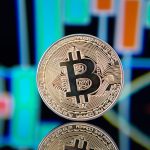Goldman Sachs, the world’s second largest investment bank, predicts that the Federal Reserve (Fed) could cut interest rates twice within two years starting from the third quarter of 2024. This potential development, combined with the expected Bitcoin halving event in April, could initiate a significant period in the cryptocurrency market.
Interest rates in the American economy have a strong correlation with investors’ appetite for risk. While Goldman Sachs had previously predicted the first Fed rate cut to occur in December 2024, persistent inflation data has prompted an update to this forecast to the third quarter of 2024, as shared by Reuters on December 11th.
The credit institution expects the Fed to lower interest rates to 4.875% by the end of 2024 following two rate cuts, whereas the previous forecast was 5.13%. This revision was updated following the release of data by the U.S. Labor Department on December 8th, which showed that the unemployment rate fell from 3.9% in October to 3.7% in November.
According to a report published by Reuters, investors believe that the strong labor market performance will not prevent the Fed from proceeding with interest rate cuts. Investors are anticipating the first cut to occur two quarters earlier than Goldman Sachs’ third-quarter prediction, in the first quarter of 2023.
The federal funds rate is set by the Federal Open Market Committee and serves as a benchmark for loans provided by U.S. banks. Currently, the federal funds rate varies between 5.25% and 5.50%. On the Fed’s part, when interest rates drop, borrowing becomes cheaper, which increases investors’ appetite for risk in the economy, including for financial markets with crypto assets.











